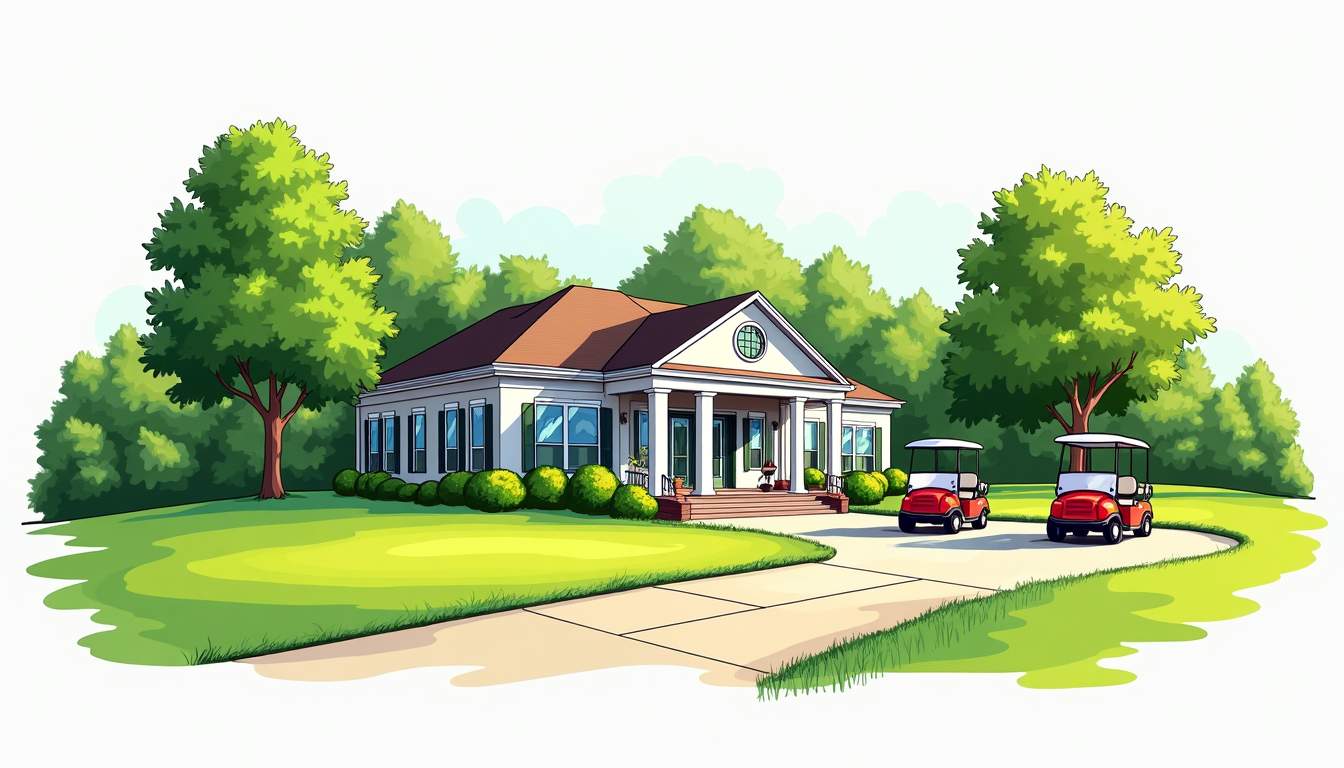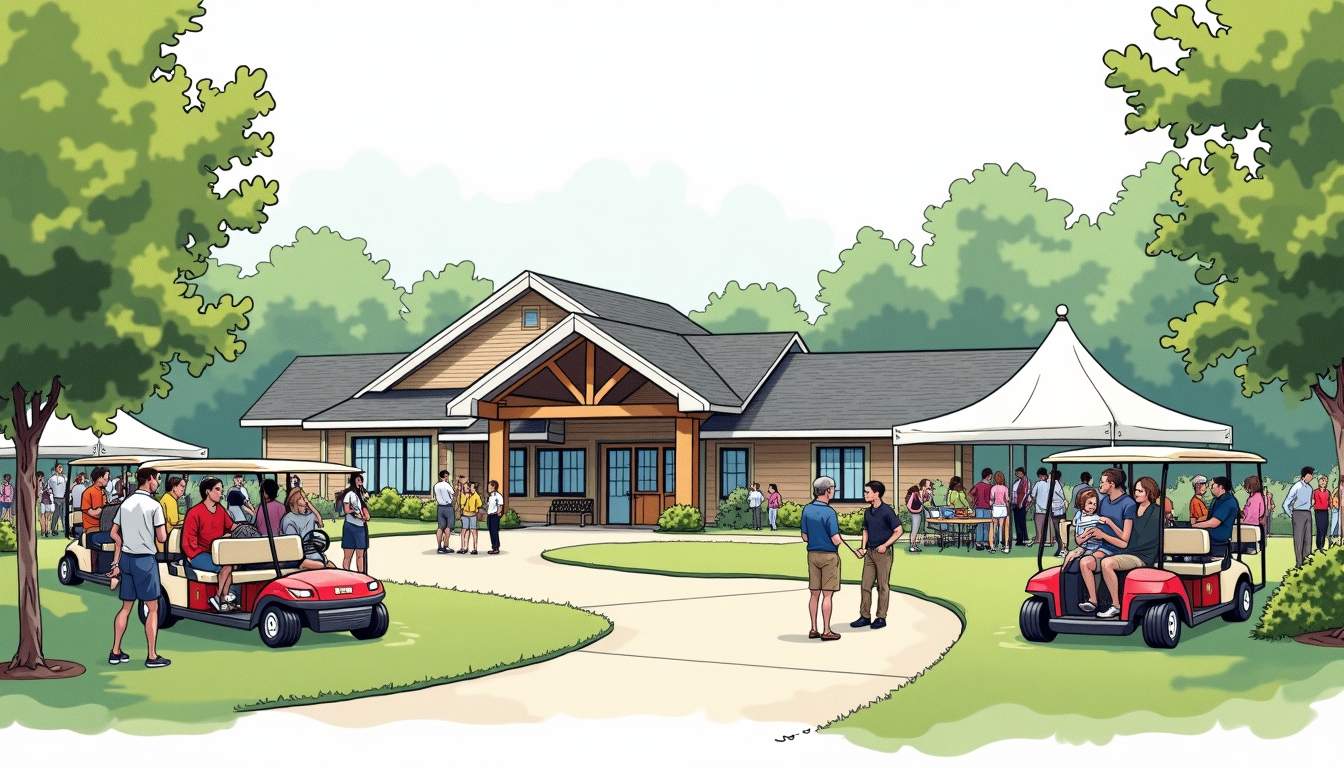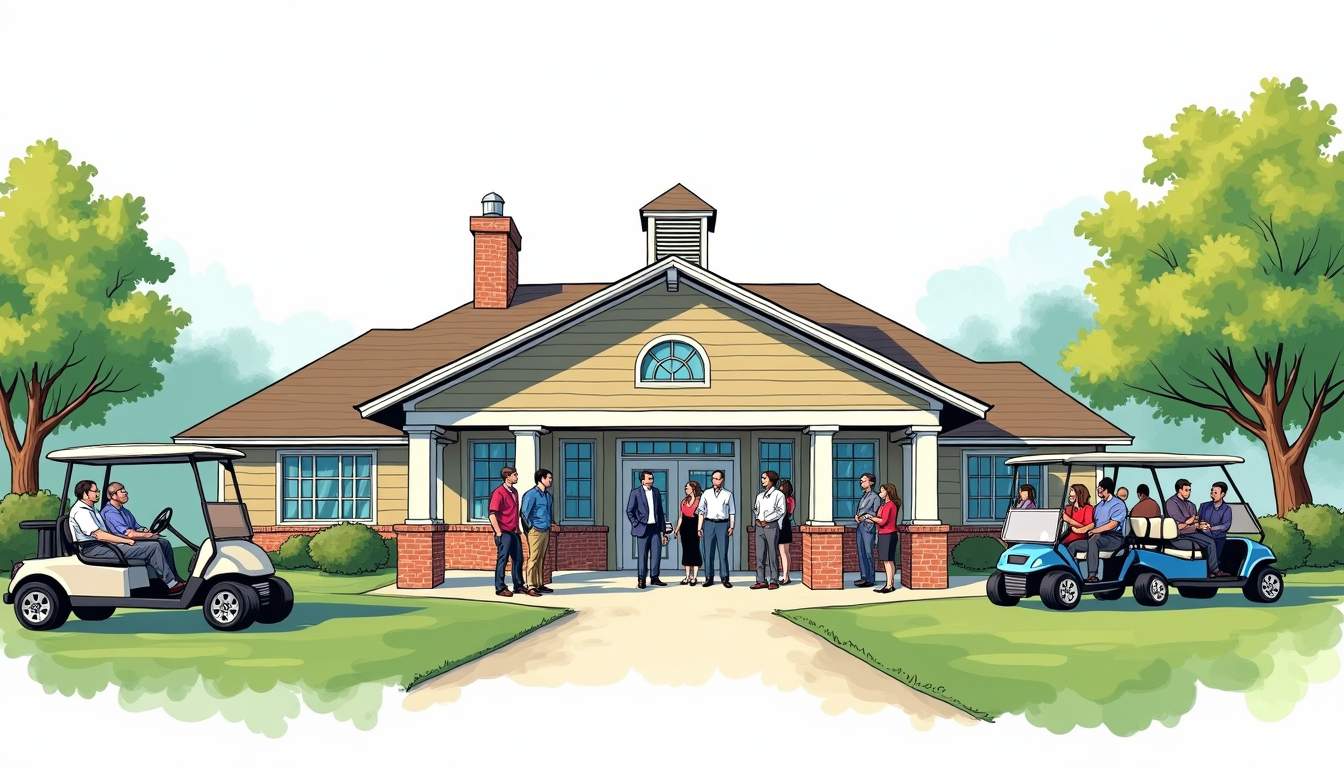
Tennessee National is more than a place to live or play golf; it is a woven network of relationships, amenities, and shared experiences that encourage people to connect. From tree-lined fairways to community events, the design and day-to-day rhythm intentionally foster interactions that turn neighbors into friends and residents into stewards of a common place.
The built environment plays a pivotal role in shaping how people interact. Tennessee National’s layout integrates homes, green space, and amenities in ways that invite casual meetings. Sidewalks along quiet streets, community greens, and strategically placed gathering spots make it easy for residents to stop and talk rather than pass by in isolation.
Landscape design also contributes to community life. Mature trees, walking trails, and open vistas are not just aesthetically pleasing; they create places where people naturally pause. Benches near scenic overlooks, small pocket parks tucked between houses, and easy access to the golf course create multiple low-effort opportunities for neighbors to exchange a greeting or a longer conversation.
Beyond the physical structures, the thoughtful positioning of lighting and signage subtly encourages outdoor activity during early evenings and weekends. Warm, inviting lights along pathways and around key communal areas enhance safety without detracting from the natural ambiance, making spontaneous after-dinner strolls or evening meetups more common. Additionally, wayfinding elements integrated into the landscape help new residents and visitors feel oriented and welcomed, fostering a sense of belonging from the moment they arrive.
Seasonal planting schemes further enrich the environment by providing dynamic focal points that change throughout the year, encouraging residents to explore and engage with different parts of the neighborhood regularly. Seasonal events, such as flower blooms in spring or harvest-themed decorations in fall, become natural conversation starters and opportunities for communal celebration.
Locating amenities near living areas reduces friction when deciding whether to join an activity. A central clubhouse, pool, tennis courts, and fitness areas all within a short walk or cart ride mean participation requires minimal planning. Casual, recurring contact at shared facilities builds familiarity and trust.
Community centers and event lawns act as informal town squares. Regular users become familiar faces; newcomers quickly feel less like strangers. This layering of spaces—private homes, semi-private yards, and public common areas—ensures encounters range from passing hellos to meaningful connections.
These shared amenities also allow for programming that caters to diverse interests and age groups, from yoga classes on the lawn to weekly farmers markets and outdoor movie nights. Such activities not only activate spaces but cultivate a culture of participation that strengthens neighborhood bonds. Furthermore, flexible multi-use areas invite residents to shape their social calendar collaboratively, enhancing the community’s responsive and evolving character.
In addition, the design includes multiple small-scale communal nooks alongside larger facilities, providing options for both quiet reflection and lively group interaction. These thoughtful variations in space scale accommodate different comfort levels and social preferences, creating an inclusive environment where everyone can find their niche and engage on their own terms.
Social programming creates predictable occasions for residents to gather. Seasonal festivals, holiday meals, and neighborhood celebrations structure the community calendar and give people reasons to show up. These events are accessible and inclusive, designed to draw a wide range of ages and interests.

Weekly and monthly offerings—fitness classes, wine tastings, book clubs, and organized walks—provide ongoing anchors. Regular participation builds relationships over time, as acquaintances deepen into friendships. The cumulative effect of many small gatherings is a network of social ties that spans the community.
Events that highlight local culture and environment reinforce a sense of place. Outdoor concerts on warm evenings, farm-to-table dinners showcasing local produce, and local-artist exhibitions make the community feel rooted in the region. These signature events also attract neighbors who may not otherwise overlap in daily routines, widening social circles.
Community-driven events—like volunteer-led cleanups or charity fundraisers—mix purpose with socialization. When residents contribute time and resources together, it builds a shared identity and pride that lasts beyond the event itself.
Smaller clubs and interest groups form natural sub-communities where deeper connections develop. Golf leagues, garden clubs, bridge groups, and hiking cohorts offer structured activities that unite people around a passion. These groups create reliable contexts for repeated interaction, which is the backbone of lasting relationships.

Interest-based groups also provide informal mentorship and knowledge sharing. New golfers learn course etiquette from seasoned players; novice gardeners pick up tips from experienced green thumbs. That exchange of skills and stories enriches daily life and helps newcomers feel welcomed.
Intergenerational programming strengthens social fabric by forming relationships across age groups. Junior golf clinics, multigenerational fitness classes, and community theater productions allow residents of different stages of life to collaborate. These interactions cultivate empathy and continuity, as experiences and roles are shared across generations.
Young families benefit from the knowledge and support of long-time residents, while older adults gain energy and perspective from youthful involvement. The result is a resilient social ecosystem where mutual support is normalized.
A thriving community is one where people feel a stake in the well-being of their surroundings. Volunteer opportunities at Tennessee National provide channels for residents to invest time and effort into collective goods. Whether through landscape stewardship, community events, or amenity maintenance, volunteering translates care into visible impact.
Civic participation also fosters leadership and accountability. Residents who take on committee roles or help organize activities learn governance skills and develop a practical understanding of how the community functions. This shared responsibility reinforces trust and reduces the social distance between decision-makers and neighbors.
Consistent, small-scale contributions—like organizing a potluck or maintaining a trail—have outsized effects on morale and cohesion. Visible results from volunteer efforts signal that the community is active and cared for. Those signals attract further engagement, creating a virtuous cycle where involvement begets involvement.
Physical and mental well-being are pillars of a community that thrives. Tennessee National emphasizes health through accessible walking paths, fitness programming, and outdoor recreation. Active lifestyles are supported by infrastructure that encourages movement and social interaction.
Safety is another component; well-lit streets, neighborhood watch initiatives, and responsive management contribute to a sense of security. When residents feel safe, they are more likely to spend time outdoors and engage with neighbors, reinforcing the social fabric.
Strong communities develop informal support networks that provide practical assistance in day-to-day life. From babysitting exchanges to meal trains during illness, these acts of neighborliness are expressions of solidarity. They reduce isolation and provide tangible benefits that improve quality of life.
Formal support systems—like community health events or wellness seminars—complement these networks by offering resources and education. Together, informal and formal supports create a comprehensive approach to well-being.
Community vitality often depends on connections beyond its boundaries. Partnerships with local businesses, artisans, and service providers integrate Tennessee National into the surrounding economy. Farmers’ market days, collaborations with nearby shops, and local vendor showcases strengthen ties with the broader region.

These economic relationships provide convenience for residents while supporting local entrepreneurs. They also deepen the community’s identity as part of a larger landscape rather than an isolated enclave, encouraging mutual investment between residents and the surrounding town.
Occasional hosting of outside events—charity tournaments, cultural fairs, or regional gatherings—invites the broader public to experience the community. When managed thoughtfully, these occasions share community assets and generate revenue without undermining resident life. They offer residents opportunities to showcase hospitality and local pride.
Thoughtful hosting also brings fresh perspectives into the neighborhood, sparking new ideas and connections that can be woven back into community programming.
Care for the landscape is central to Tennessee National’s identity. Sustainable practices in land management, water use, and habitat protection ensure that the natural environment remains a long-term asset. Residents who participate in stewardship activities develop a shared sense of responsibility for the place they call home.
Community gardens, native-plant initiatives, and educational workshops about local ecology make environmentalism a social activity rather than an abstract ideal. That shared stewardship reinforces the bonds between neighbors who learn and act together for the future.
Maintaining balance between recreational use and ecological preservation requires active dialogue and adaptive policies. Residents, managers, and environmental experts collaborate to create practices that allow enjoyment of green spaces while minimizing impact. That process of negotiation is itself community-building, as stakeholders articulate values and find common ground.
Long-lasting communities develop traditions that mark time and create continuity. Annual parades, holiday rituals, and recurring competitions give residents shared reference points. These traditions convey a narrative about who the community is and what it values, helping newcomers understand and integrate into social life.
Stories about founding members, memorable events, or notable neighborly acts become part of the communal memory. Sharing those stories at gatherings or in newsletters strengthens identity and makes the community feel like a living, evolving entity rather than a collection of houses.
Traditions are healthiest when they are inclusive and open to reinterpretation. Allowing new residents to contribute ideas and create new customs keeps the culture vibrant. This intermixing of old and new sustains engagement across generations and preserves a sense of belonging that adapts to changing times.
Community thriving at Tennessee National is not the result of a single factor but the sum of many small, intentional choices. Design that invites encounters, programming that creates shared experiences, opportunities for service and leadership, partnerships beyond the neighborhood, and a commitment to environmental stewardship all contribute to a resilient social fabric.
When a place supports routine interactions and provides meaningful contexts for people to contribute, relationships grow naturally. That steady, quiet work—of neighbors greeting each other on a walk, volunteering for an event, or sharing a meal—builds a community that sustains and enriches the lives of those who live there.
Experience firsthand how thoughtful design, vibrant amenities, and genuine connections come together at Tennessee National. From our Greg Norman Signature Golf Course to engaging social clubs and scenic nature trails, every detail is crafted to foster belonging and enrich everyday life. Whether you seek a move-in ready home or a custom build, we invite you to join a community where luxury and connection thrive. Schedule your private tour today and start making lasting memories in a neighborhood designed for connection.